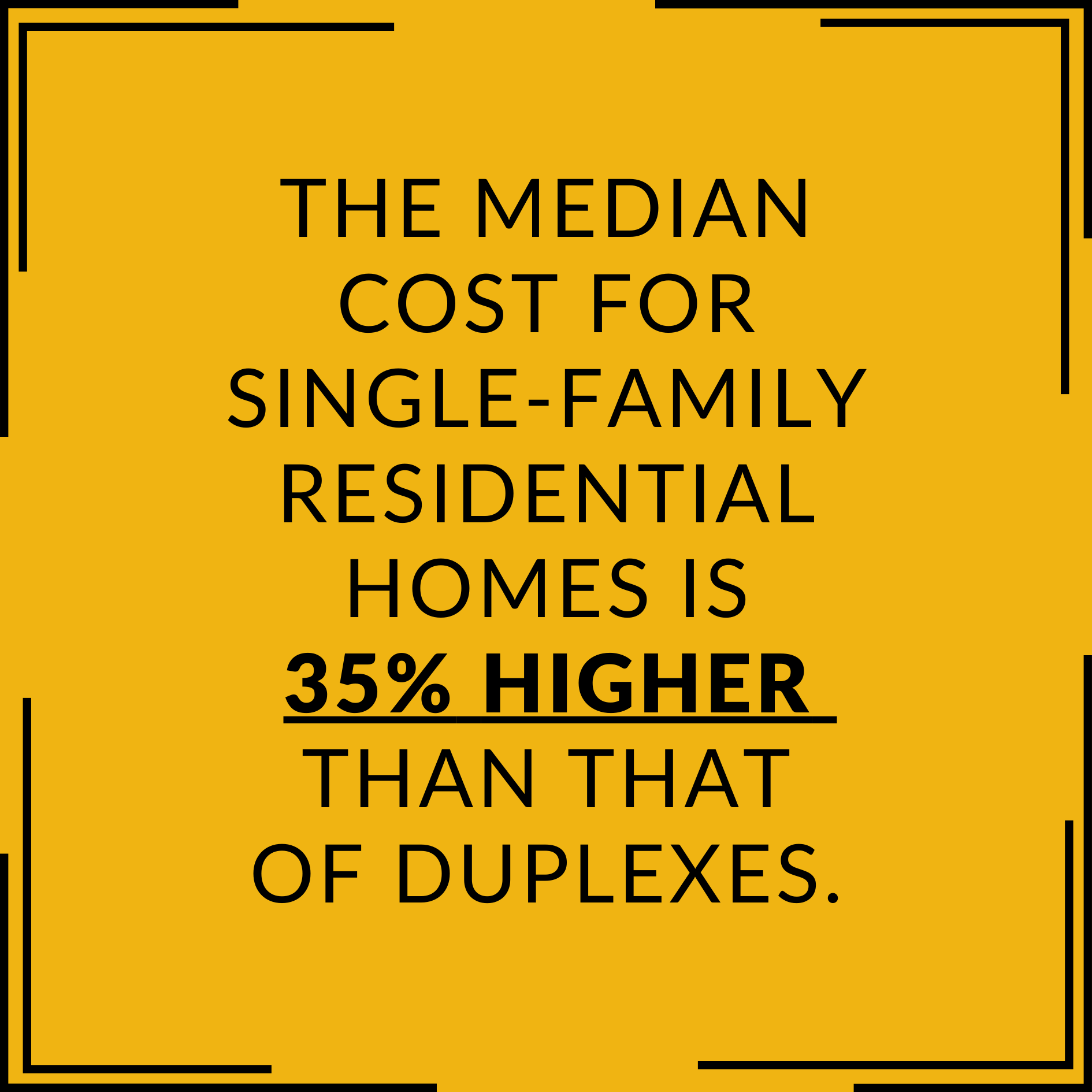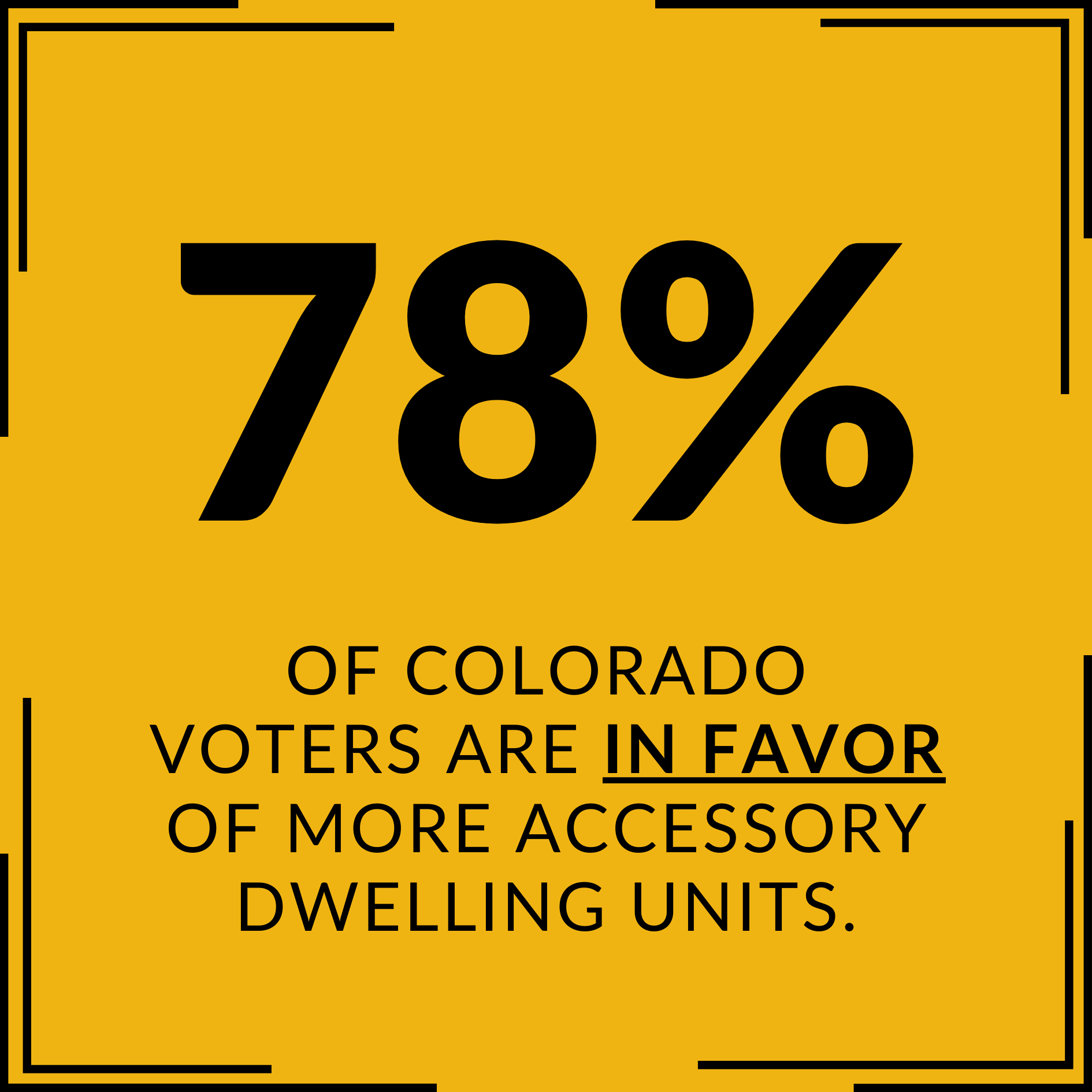Land Use & Zoning in Jefferson County: Closing the Housing Supply Deficit
Jefferson County (Jeffco) residents and local officials are keen to bring down housing and rent prices in their communities. The policy levers to implement this change are found at the local and state level. Zoning and land use policy has sprung to the forefront in recent years as one major component of bringing down housing costs. By changing what can be built and where, Jeffco communities can multiply the effect of every dollar spent on housing.
Some of the necessary changes to land use and zoning code are on the local side, and Jeffco leaders have led the way. Building on these efforts, a number of bills are pending in the state legislature that could expand housing opportunities. Closing the housing supply deficit in Jeffco, which stands at 20,000 attainable housing units, can help slow the increase of housing and rent prices. This factsheet will provide a broad overview of the types of changes and their potential impact in Jeffco: increasing density, overturning growth caps, adding accessory dwelling units, and building transit-oriented development.
Increased Density
The cost of housing in Jeffco varies based on development type. The median cost for single-family residential homes is 35 percent higher than that of duplexes and 40 percent higher than triplexes or fourplexes. Single-family-only zoning, which limits construction in an area to single-family homes while disallowing multi-family housing units like apartments or duplexes, is prevalent across Jeffco. By expanding zoning options to include duplexes, triplexes, fourplexes, etc., cities can build more densely. Further, these housing units are typically cheaper to construct, assisting the state and private developers in meeting their goal of building more affordable housing. By increasing density, more housing units can be built on the same amount of land, potentially leading to more affordable options due to increased supply.

Overturn Growth Caps
Recent state legislation removed caps on how much cities could build. Lakewood and Golden’s caps were nullified due to this change. The caps limited the amount of construction of residential units or developable land to maintain the localities’ character, mitigate infrastructure demands, or conserve natural spaces. These caps restrict the development of housing and the ability to close the supply gap. Jeffco communities and leaders must be attentive to potential negative consequences of growth, but restrictive caps are overly restrictive and not the answer.

Accessory Dwelling Units
Also known as ‘granny flats,’ accessory dwelling units (ADUs) are small but separate housing units that can be built atop garages, in backyards, etc. at a relatively lower cost and at greater speed. They are essentially second homes – usually smaller – built on the same property as the main unit. They’re often used for intergenerational housing, to supplement income for households on fixed incomes, or affordable rental options. They’re also energy efficient compared to single family residential and utilize existing water, sewer, and electricity lines. Root Policy estimated that adding ADUs in Jeffco could increase housing units by up to 1,200 units (adding 7 percent in capacity). Not a seismic shift, but a meaningful step of many in closing the attainable housing supply deficit.
The rollout has been slow in parts of Colorado that already allow for ADUs such as Golden and Lakewood. In places like California, where it’s been allowed for longer periods, the impact has been significant on the housing supply and affordability, especially for middle-income households. About 60,000 ADUs have been built in California since their 2016 legalization. A similar tool involves legalizing lot splits – selling a portion of your yard, for instance, so it can be separately developed – for homeowners at risk of displacement who might not be able to afford the construction of an ADU on their property. ADUs are popular throughout Jeffco and the state with 78 percent of Coloradans supporting this tool.

Transit-Oriented Corridors (TOC)
Encouraging development near public transportation hubs through zoning changes can reduce housing costs, the need for car ownership, and lower living costs for residents. TOC policies can also stimulate economic development in transit-accessible areas, building around bus hubs and/or light rail stations. This zoning change can mitigate pollution concerns sometimes associated with greater density. Fortunately, this tool also garners enthusiasm as 68 percent of Coloradans support increasing housing density around transit corridors.
One bill in the state legislature would increase zoning density around transit sites, such as bus stops or light rail stations. It would remove barriers in place that limit housing density to encourage building more housing near transit sites. In Jeffco, this would apply to Lakewood, Arvada, Edgewater, Westminster, Wheat Ridge, and Golden. Other areas could opt in, but would not be required to do so to achieve these transit-related housing goals. Cities would look at developable property close to rail lines or high-frequency buses as well as future transit lines to increase density.

Conclusion
State policy changes in land use and zoning can be crucial in shaping the availability and affordability of housing in Jeffco. By implementing strategies that encourage affordable housing development, the state can help Jeffco address housing affordability challenges and create more inclusive and equitable communities, including increased density, overturning growth caps, building ADUs, and encouraging TOCs. Designed well, these changes can build on and complement land use and zoning reform previously implemented by Jeffco local leaders.

